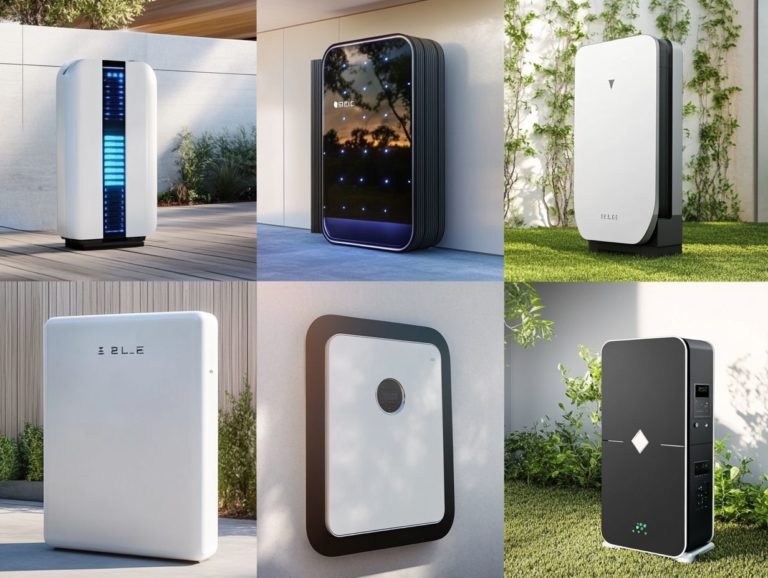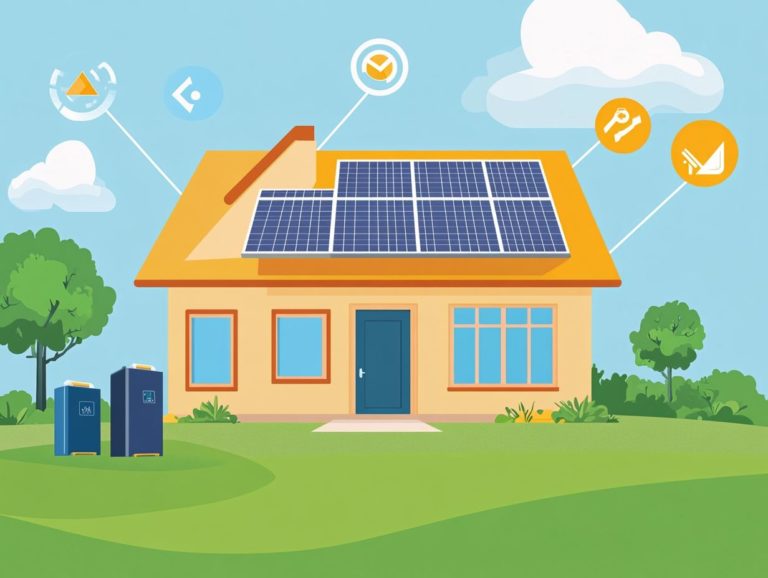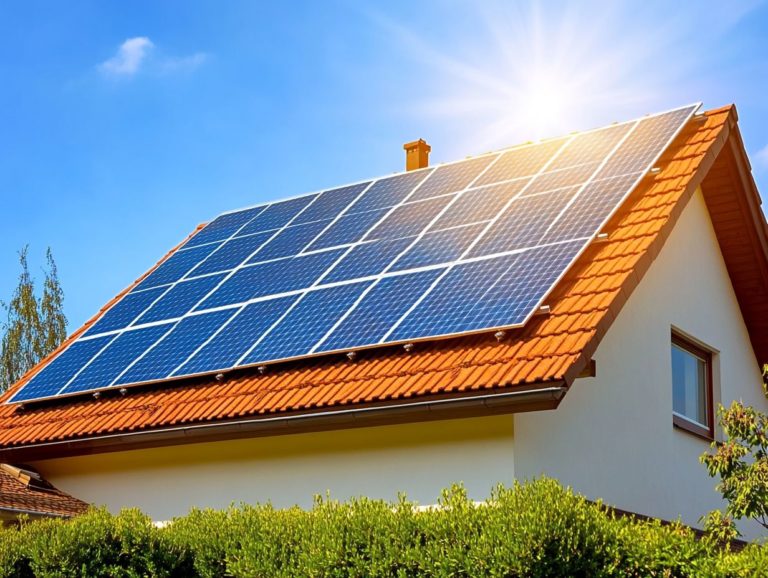Energy Storage vs. Energy Generation: What’s the Difference?
Energy lies at the very core of your modern life, fueling everything from your home to industries.
The way you generate and store energy is vital in shaping a sustainable future. This article delves into the essential differences between energy generation and storage, examining various methods from renewable to non-renewable sources, as well as a range of storage solutions.
You ll explore real-world applications, the challenges encountered, and the exciting advancements on the horizon. Join in as you navigate this dynamic landscape, uncovering the critical components that propel energy systems forward.
Contents
- Key Takeaways!
- Understanding Energy Storage and Energy Generation
- Methods of Energy Generation
- Types of Energy Storage
- Applications and Uses of Energy Storage and Generation
- Challenges and Limitations
- Future Outlook and Advancements
- Frequently Asked Questions
- What is the difference between energy storage and energy generation?
- What makes energy storage essential?
- What are some examples of energy storage technologies?
- How does energy storage impact the environment?
- Is energy storage more expensive than energy generation?
- Can energy storage and energy generation work together?
Key Takeaways!
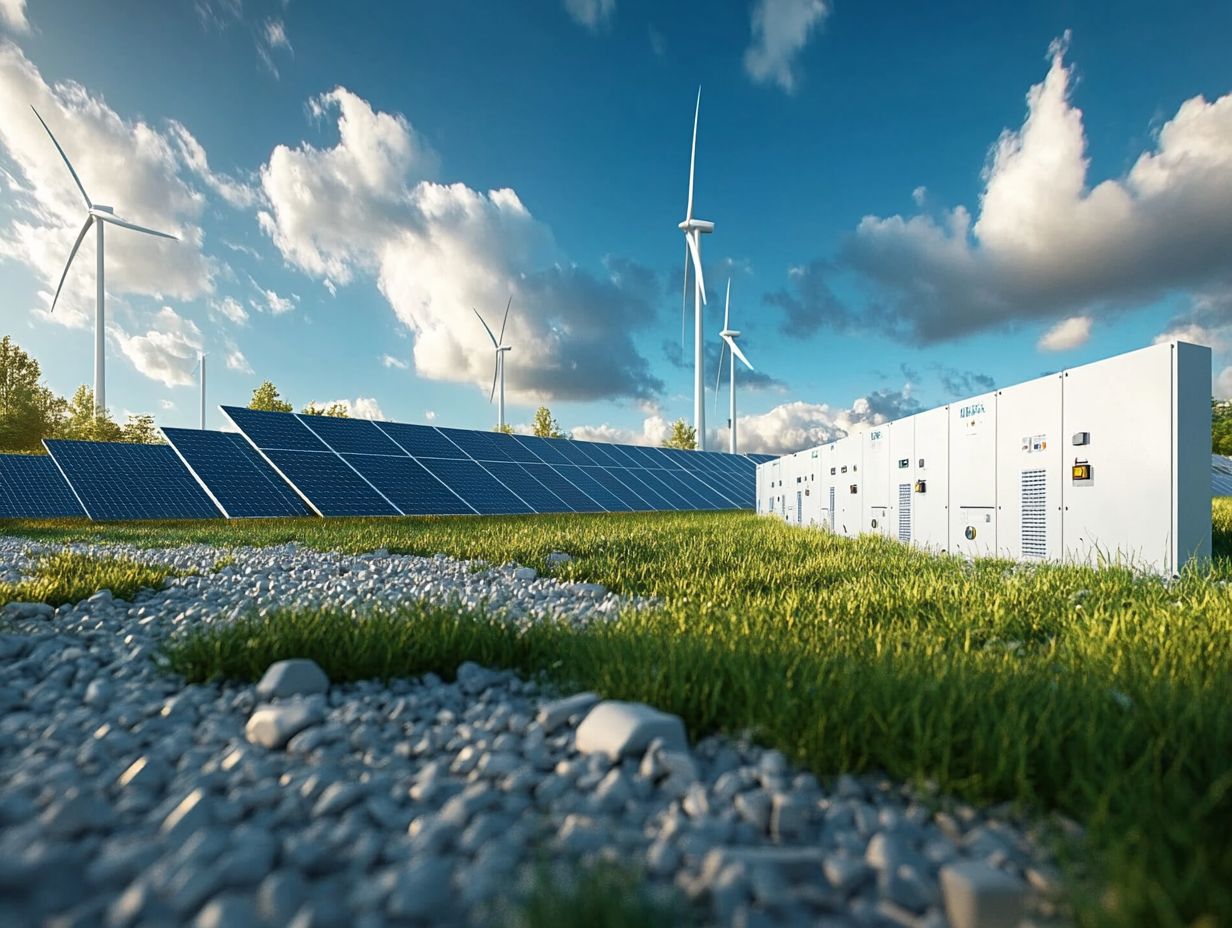
- Energy storage and generation are two distinct processes that play crucial roles in meeting our energy needs.
- Renewable sources such as solar and wind are used for energy generation. On the other hand, batteries and water-based energy storage provide essential backup power.
- The future of energy solutions lies in finding a balance between efficient energy generation and storage to meet the ever-growing demand for power.
Understanding Energy Storage and Energy Generation
Understanding energy storage and electricity generation is essential in today s world. Renewable energy sources like solar and wind power are becoming increasingly vital in the fight against climate change.
Recognizing the historical contributions of pioneers like Thomas Edison and Andrew Volta will help you appreciate the foundations of modern energy technologies. Their innovations have paved the way for electric vehicles and smart energy systems that are crucial for meeting energy demands while providing necessary support to the grid.
By integrating advanced energy storage systems such as lithium-ion batteries (batteries that store energy for later use), water-based energy storage, and thermal energy storage and utilizing supercapacitors (devices that store energy for rapid release), you can significantly enhance the efficiency and reliability of these renewable sources.
Definitions and Basic Concepts
Energy storage is all about capturing energy produced at one moment for use at a later time, while electricity generation involves the various processes through which electric power is created from a range of energy sources.
These processes can differ significantly, encompassing traditional methods like burning fossil fuels alongside cutting-edge techniques that harness renewable resources such as solar and wind. Energy storage technologies, like lithium-ion batteries, have surged into the spotlight due to their impressive efficiency and ability to deliver quick bursts of electricity. This makes them essential for stabilizing output from intermittent renewable sources.
On a similar note, water-based energy storage taps into gravitational potential energy, allowing substantial amounts of energy to be stored and released when needed. Supercapacitors excel in rapid energy release, making them perfect for applications that demand swift power bursts.
Together, these systems are vital in modern energy management, ensuring a consistent electricity supply while optimizing the integration of both renewable and non-renewable energy sources, especially within microgrids.
Methods of Energy Generation
Energy generation methods can be divided into renewable and non-renewable sources. Embracing renewable energy technologies not only facilitates sustainable electricity generation but also plays a crucial role in mitigating the impacts of climate change.
Ready to dive deeper into energy solutions? Join the movement today!
Renewable and Non-Renewable Sources
Renewable energy sources, including solar, wind, and hydroelectric power, are increasingly dominating electricity generation, contrasting sharply with traditional non-renewable options like coal and natural gas.
This shift reflects a growing awareness of the environmental challenges posed by fossil fuels, such as air pollution and greenhouse gas emissions. Embracing renewable options opens up the possibility for sustainable, cleaner energy. However, challenges like the inconsistency of energy supply when the sun isn t shining or the wind isn t blowing and the pressing need for efficient energy storage solutions remain.
Energy storage technologies, such as pumped-hydro systems and thermal storage, are essential in addressing these hurdles. They provide a buffer that enhances the reliability and efficiency of renewable energy generation. By effectively balancing supply and demand, these technologies pave the way for a smoother transition toward a more sustainable energy future.
Types of Energy Storage
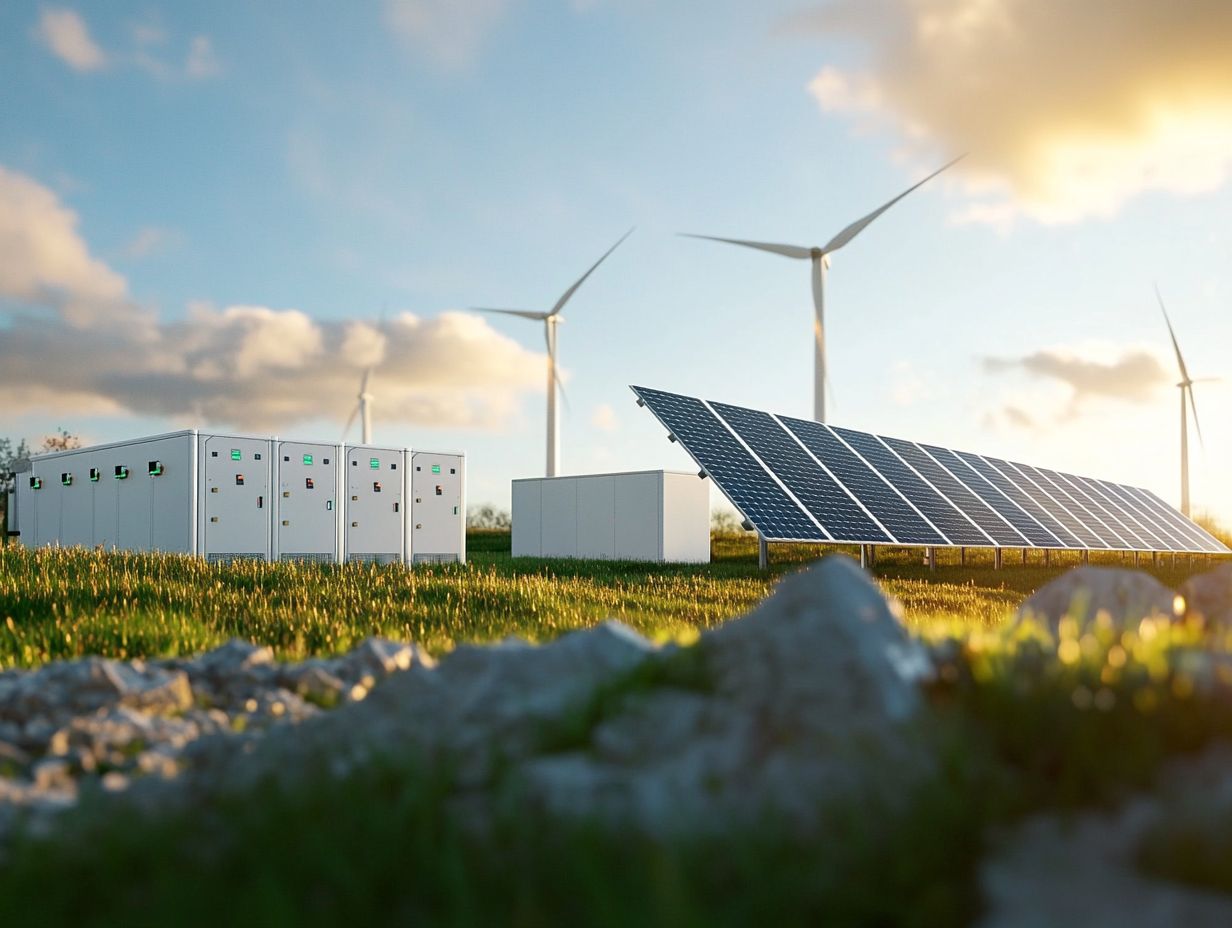
Curious about how energy storage can transform our world? Let s explore its many applications! You ll find a variety of energy storage technologies, each boasting unique characteristics and advantages. These include:
- Pumped-hydro storage: Uses water to store and generate energy.
- Lithium-ion batteries: Known for their high energy density and rapid charging capabilities.
- Compressed-air energy storage: Stores energy by compressing air in underground caverns.
- Supercapacitors: Excellent for quick bursts of energy.
- Thermal energy storage: Stores energy in the form of heat.
Together, these technologies play crucial roles in balancing energy supply and demand, ensuring a reliable and efficient energy ecosystem.
Comparing Energy Storage Solutions: Benefits and Challenges
Comparing various energy storage technologies reveals distinct benefits and challenges, making it crucial to select the right solution tailored to specific applications.
Take pumped-hydro storage, for instance. It s renowned for its impressive capacity and efficiency, particularly excelling in large-scale applications. However, it does come with geographical constraints and a hefty initial investment.
Lithium-ion batteries offer remarkable flexibility and rapid response times, making them ideal for consumer electronics and electric vehicles. But beware their lifecycle and environmental impacts raise significant concerns that can’t be overlooked.
Thermal energy storage effectively optimizes energy usage in buildings and industrial processes. Yet, it often requires more physical space and may struggle to deliver instant power during peak demand.
On the flip side, supercapacitors excel in scenarios that need quick bursts of energy. However, their limited capacity makes them unsuitable for long-term energy storage.
Understanding each option can empower you to choose the best energy storage solution!
Applications and Uses of Energy Storage and Generation
Energy storage and generation technologies offer many applications across various industries, ranging from electric vehicles to industrial energy systems.
These innovations enable a seamless integration of renewable energy sources, significantly enhancing grid resilience and reliability, particularly in regions like California, China, and Italy.
Industries and Technologies Utilizing Each
Various industries leverage energy storage and generation technologies to boost efficiency, cut costs, and facilitate the shift toward renewable energy sources.
In the transportation sector, electric vehicles are transforming how we consume energy, largely due to advancements in lithium-ion batteries that deliver high energy density and rapid charging capabilities.
Similarly, in both commercial and residential spaces, energy storage systems are essential for managing solar energy. They allow you to store surplus power generated during the day for use at night. Technologies such as pumped-hydro storage also play a critical role, enabling large-scale energy retention and distribution. For a deeper insight, explore understanding energy storage, which ultimately enhances energy efficiency and fosters sustainability across a range of sectors.
Challenges and Limitations
Despite the numerous advantages that energy storage technologies offer, several challenges and limitations hinder their widespread implementation and effectiveness in tackling climate change.
Obstacles to Implementation and Improvement
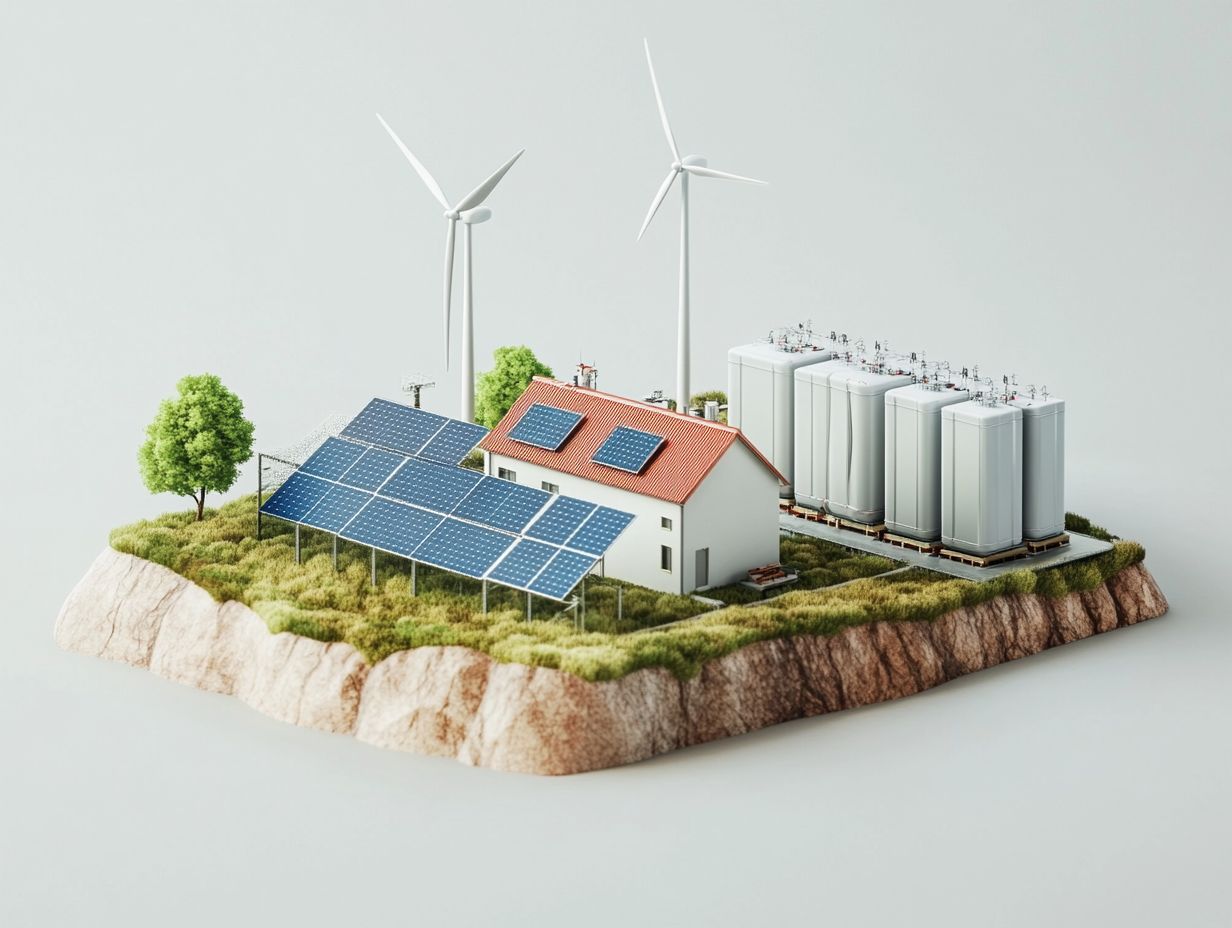
Obstacles to implementing and improving energy storage technologies can range from steep initial costs to regulatory hurdles that complicate integration into electric grids.
The absence of standardized regulations creates uncertainty for investors and developers. This makes it more challenging to secure funding for innovative projects. Without clear guidelines, coordination among various energy providers becomes a daunting task, often resulting in inefficiencies in energy distribution. These inefficiencies can significantly impact grid reliability and resilience, especially as renewable energy sources gain traction.
To address these challenges, advocate for policymakers to consider amending existing regulations or introducing incentives that support research and development in battery technology. Advancements in smart grid systems will facilitate smoother integration, enhancing overall energy management and storage capabilities.
Future Outlook and Advancements
The future of energy storage is bright! Exciting advancements focused on boosting efficiency, capacity, and seamless integration with renewable energy systems are on the horizon. You can expect significant improvements, especially as demand escalates with the rise of electric vehicles.
Potential for Growth and Innovation
The potential for growth and innovation in energy storage technologies is immense, fueled by the increasing need for efficient solutions that harness renewable energy and support electric vehicles.
This shift towards sustainable energy sources demands advancements in battery technologies, notably lithium-ion and solid-state batteries. These are becoming essential players in this evolving landscape. Research institutions and private enterprises are collaborating to enhance energy density, reduce costs, and improve charging efficiencies. This progress creates a ripple effect that could significantly strengthen the renewable energy sector.
Your strong investment in this area not only drives technological advancements but also addresses grid stability, fostering a more resilient energy infrastructure. These innovations are crucial now, as they will redefine energy consumption patterns and play a pivotal role in combating climate change, underscoring the importance of ongoing commitment to research and development efforts.
Frequently Asked Questions
What is the difference between energy storage and energy generation?
Energy storage refers to the process of storing excess energy for future use, while energy generation involves the production of energy from a source.
What makes energy storage essential?
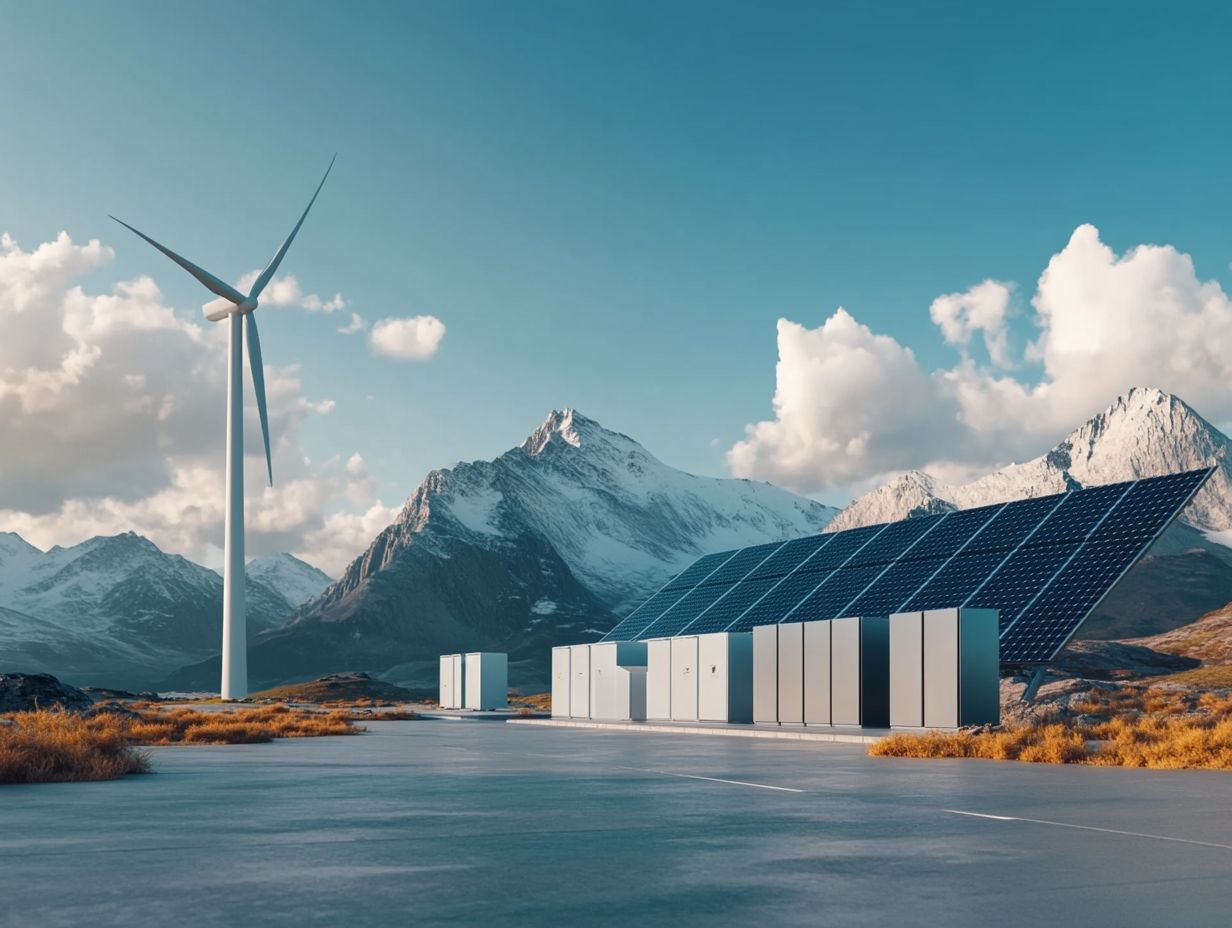
Energy storage plays a crucial role in balancing energy supply and demand, particularly for renewable energy sources that may have intermittent generation.
What are some examples of energy storage technologies?
Batteries, pumped hydro storage, compressed air energy storage, and thermal energy storage are all examples of energy storage technologies.
How does energy storage impact the environment?
Energy storage can positively impact the environment by reducing the need for fossil fuel generation, which produces harmful emissions.
Is energy storage more expensive than energy generation?
The cost of energy storage varies depending on the technology used, but it is generally more expensive than traditional energy generation methods. However, the cost of energy storage is decreasing as technology advances.
Can energy storage and energy generation work together?
Yes, energy storage and energy generation can work together to create a more reliable and sustainable energy system. Energy storage can store excess energy generated from sources such as solar and wind, making it available for use when there is high demand for energy.

